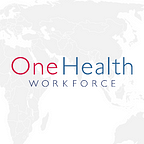Seeing the World Through Many Lenses
Nalaga Grace Celia, a software engineering student at Makerere University, shares her experiences at the One Health Institute field attachment this summer. The institute trains multi-disciplinary students to manage infectious diseases across Uganda.
My name is Nalaga Grace Celia. I was attached to the Bwera demo site for the One Health Central and Eastern Africa (OHCEA) university network field attachment in July 2017. The site is found in the Kasese District at the border of Uganda and the Democratic Republic of Congo. I was here along with fifteen other cohort members to round out our multi-disciplinary team. I was in charge of the media, this included capturing our daily activities and progress by taking pictures, videos and posting on social media. As a software engineering student, this suited me perfectly.
During our community entry and needs analysis at the Bwera general hospital, I discovered that the hospital laboratory was already running research on antimicrobial resistance (AMR), but the data collected was not aggregated for use, and the information and knowledge was not disseminated. This was due to the need for appropriate software to aggregate the data.
I also faced a challenge of the community members’ willingness to have their pictures taken. The language barrier was not helping the situation and the majority of the people only spoke their native language, Lukonjo.
With the help of our field supervisors acting as interpreters, and the team’s ability to humble ourselves and explain why we were there and our need to discuss the current health conditions, we were able to schedule various other visits to these communities.
During this time, we discovered that there were other languages that these people spoke and this eased our communication with them. Some of these languages include Swahili, Lutoro, Luganda, and many others. As I got on friendlier terms with the people, they would let me take their pictures as they worked and their communities.
We also held health education sessions in these communities in which I lead the introduction sessions. This gave me a chance to improve my public speaking skills. During these sessions, we informed the community about their health challenges and they took this chance to take the lead in formulating possible solutions for themselves.
This, in turn, empowered the community.
During the discussion of how to handle the AMR challenge, we came up with an idea of staging a short play for our target audience. Soon enough, this idea turned into a plan of filming the play and having it screened for various audiences. This was the birth of “AMR: The Silent Killer,” a short amateur film, in which I acted as the mother and a practitioner of some of the highly discouraged bad habits of sharing medicine. I also had the opportunity of using my software skills to edit the film and add the subtitles, as it was acted out using the Luganda language. This was one of the most exciting times during the attachment.
On the 23rd of July 2017, we visited Muruseghe Primary School on the Rwenzori Mountains. We had went there to check on the interventions completed by the OHCEA group from the previous year. That day, most of the pupils had been sent home with a demand to pay their fee balance. On finding out how much was owed, some of my friends and I came up with the idea to sponsor several pupils’ school fees out of our own pockets. These were intelligent children who touched our hearts. We each got one pupil to sponsor and then worked out the technicalities with the school administration and their parents or guardians. This is where I met a primary five pupil who is very shy and wants to become a teacher in the future. We hope that the little we do can pave a brighter future for these children. That our friendship with them shall open their eyes to the many possibilities that this world provides them, the things that their sheltered lives have kept hidden until now.
At the end of my attachment, I learnt how to handle the community dynamics. I experienced the difference between a world behind a computer screen and that of a world in the field, with the people, their animals and their environment. I saw the world through different lenses of all my teammates’ different academic backgrounds and I shall always be grateful for the opportunity.
I also developed a concept for a software on “the community medical file” that can help these people and other communities easily practice the One Health concept online. Hence, reducing the need to require meeting in-person in order to discuss what is happening in the community. Imagine the human medicine practitioners, veterinarians, environmentalists, social scientists, engineers, and any more others on one platform discussing what is best for their community and how to keep it safe. That is a roadmap to a better tomorrow.
About the Author
Nalaga Grace Celia is a software engineering student at Makerere University. She participated in the OHCEA Uganda’s One Health Institute in 2017.
